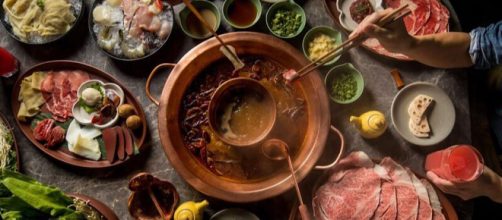Tang Hotpot is an NYC eatery that is dedicated to regional cuisine from the Sichuan area of China. The eatery holds the distinction of being one of the city’s finest Sichuan hotpot houses that prides itself on its prestigious selections of high-quality wines and meats.
Yu Li is the general manager and owner of Tang Hotpot. His father owns a series of restaurants and hotels back in China, and working with his father helped Yu Li develop a keen sense of business and tasty food. The foods served at Tang Hotpot are inspired by Yu Li’s own passion for Chinese dishes and culture.
He prides himself on creating memorable dining experiences via service, atmosphere, and delicious meals.
Yu Li discussed his restaurant and more via an exclusive interview on January 9, 2019.
China, dishes, and restaurants
Meagan Meehan (MM): When did you initially realize that you were destined to become a chef?
Yu Li (YL): For the cuisine, I recruited a Sichuan Chef. I am the owner of The Tang and Tang Hotpot and the brain behind the concept. I oversee the cuisine.
MM: What differentiates Sichuan food from dishes that hail from other parts of China?
YL: Sichuan food is most famous for the complexity of flavor. Sichuan hotpot is known for its use of beef tallow and a large number of spices. At Tang Hotpot we followed the tradition by creating an authentic Hotpot experience through using beef tallow, but it's also the festive dining format that gathers people.
MM: What's your personal favorite Sichuan meal and which dish is the hardest to prepare?
YL: My favorite dish is the classic beef tallow hot pot. It's also the dish that's hardest to prep because of the soup base. The beef tallow soup base requires 30+ different kinds of Chinese medicines, herbs, and spices, and the portion of each in the mix of beef tallow is extremely hard to master. We also have a pork bone broth that requires 12 hours to stew to bring out the most flavors.
MM: You grew up around the hotel and restaurant industries in China, so how did that prepare you for your current career? Also, what are the major differences between these industries in China versus the USA?
YL: Watching and learning from my father prepared me for the management skills that I need.
The standard for customer service is very different from China and America. In China, being hospitable sometimes means the owner has to come out and have a drink with the guest or sending a lot of free food and drinks. In the U.S., customers are more focused on the quality of the ingredient and might expect the chef or manager to explain the story behind the dish.
MM: How did you establish Tang Hotpot and how tough is it to keep a restaurant in business Manhattan?
YL: When I started out, there was no high-end hotpot in New York, so I decided to bring upscale ambiance to the hotpot scene. I personally also adore the culture from Tang Dynasty, so I integrated that into the restaurant. I think bringing in Chinese culture to local New York hospitality scene while providing uncompromising food would spark an interesting cultural dialogue between East and West.
It definitely requires more effort and attention to maintain a high standard restaurant. And It is also quite difficult for a hotpot restaurant to maintain steady revenue in New York since hotpot is very seasonal.
The future, the menu, and the Chinese New Year
MM: The Chinese New Year is coming up next month, so what does this holiday mean to you and how is it typically celebrated in Sichuan?
YL: It means family, gatherings, and a lot of eating. Forget about freshman 15, celebrating CNY would give me CNY 20! Sichuan CNY celebration usually includes lighting firecrackers, playing Mahjong, and making smoked meat.
MM: Will Tang Hotpot be offering any special discounts and/or in honor of 2019, aka the Year of the Pig?
YL: We are offering a prix fixe dining menu to celebrate the Chinese New Year from Feb 4-5. The menu is below:
- Appetizer: Garlic Pork Wrapped Okra, Steamed Honey Lotus Root with Sticky Rice
- Broth: Customer’s Choice
- Meat: USDA Prime Ribeye, Lamb Shoulder, Berkshire pork collar, Fresh Omasum Beef Tripe, Pork Artery, Spam, Beef Meatball with Soup Filling (Add-on: Miyazaki Kobe Ribeye)
- Seafood: Sliced Sea Bass, Tiger Prawn, Scallops, Mussels (Add-on: Boston Lobster)
- Vegetables & Mushrooms: Baby Chinese Cabbage, Pea Sprouts, King Trumpet Mushroom, Enoki Mushroom, Wood Ear, Bamboo Fungus, Chinese Yam, Taro, Thick Vermicelli Noodle, Rice Cake
- Entree: Rainbow Dumplings
- Dessert: Rice Ball in Rice Wine or Ice Cream
- Drink: Choice of Glass of Wine / Beer
MM: What are your biggest hopes regarding the future of Tang Hotpot?
YL: I hope to expand Tang Hotpot to other areas in the U.S., and give more accessibility to an authentic, contemporary, and premium hotpot experience to food lovers.


